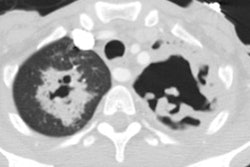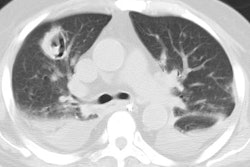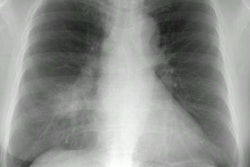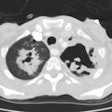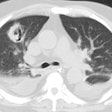Radiology 2000 Jul;216(1):117-21
Pulmonary tuberculoma evaluated by means of FDG PET: findings in 10 cases.
Goo JM, Im JG, Do KH, Yeo JS, Seo JB, Kim HY, Chung JK.
PURPOSE: To describe findings of pulmonary tuberculoma at 2-[fluorine
18]fluoro-2-deoxy-D-glucose (FDG) positron emission tomography (PET). MATERIALS
AND METHODS: Ten consecutive patients who underwent PET and subsequently were
proved to have pulmonary tuberculoma were analyzed. Tuberculosis was proved
histopathologically in eight by means of wedge resection or lobectomy (n = 7) or
needle biopsy (n = 1) and in two by means of clinical follow-up for more than 2
years. PET scans were evaluated by using peak standardized uptake values.
Computed tomographic (CT) and histopathologic findings also were reviewed.
RESULTS: Nine of 10 tuberculomas showed FDG uptake at PET, and the mean peak
standardized uptake value was 4.2 +/- 2.2 (SD). FDG uptake (range, 1. 9-3.7) in
lesions adjacent to main abnormalities was demonstrated in four patients. On CT
scans, the mean of the longest nodule diameters was 21 mm +/- 8, and there were
some areas of branching linear opacities or satellite nodules that suggested
pulmonary tuberculosis in seven patients. Histopathologic findings were chronic
granulomatous inflammation with caseation necrosis (n = 7) and healed
tuberculosis with aspergilloma (n = 1). CONCLUSION: Pulmonary tuberculoma
commonly causes an increase in FDG uptake. These results suggest that in
geographic regions with a high prevalence of granulomatous lesions, positive FDG
PET results should be interpreted with caution in differentiating benign from
malignant pulmonary abnormalities.

